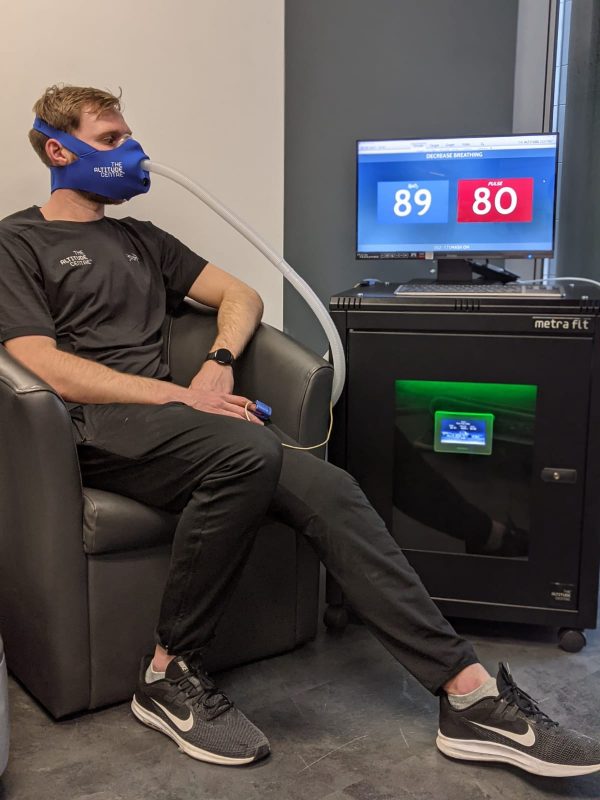Breathe it in – literally.
As part of our IHE programme on the MetraFIT POD, you will take yourself from the summit of Pikes Peak (~4000m) to the summit of Kilimanjaro (~6000m) and beyond, all while kicking back and relaxing.
So what are the benefits of training without ‘training’?
There are a multitude of benefits to be gained from IHE, including an increase in fat metabolism, fitness maintenance, improved oxygen efficiency and altitude acclimation just to name a few. The real question you need to ask, is how do you use IHE to maximise your training benefits?

Goal specific training
As with any mode of training, the goal is the key. You need to plan your use of IHE to fit with your wider programme and current goals.
We use IHE with a range of clients in a variety of ways, and we’ve outlined a few of the key uses for you below:
1. Performance improvement
Research shows that combining IHE with training at altitude can improve your response to the training, and take your performance further still. While the method of training means that it doesn’t physically stress the body, you can incorporate it into your rest days or taper phase, or tag it in pre- / post-training session to reap the rewards.
2. Health & Wellbeing
Lots of clients will use this as a stimulus to improve overall health and wellbeing. The training can elicit improvements in fat metabolism, oxygen efficiency, blood pressure and fitness – all without actually participating in exercise, which makes it perfect for those that don’t enjoy exercise, or are load compromised and physically can’t exercise. Which leads us on to the next goal…
3. Injury rehabilitation
There is nothing worse than suffering an injury that leaves you off your feet, and unable to train. While you can’t train, you need to maintain fitness as much as possible, so you need a trigger to stimulate metabolic load. The IHE protocol will elicit an increase in heart rate, a reduction in blood oxygen, and also an increase in hormones such as HGH. All of this combined helps you to maintain fitness as much as possible without loading the injury site, but can also stimulate a faster recovery from injury too.
4. High Altitude Acclimation
Exactly what it says on the tin. Travelling to high altitude? We recommend 10-15 sessions ahead of your departure date to provide the optimal adaptations required to reduce your susceptibility to altitude sickness, but ultimately the more time you spend exposed to the high altitude stimulus, the better the physiological adaptations you’ll make before climbing, which increases your likelihood of tagging that all important summit.

Have any questions about IHE and altitude training? Just get in touch below:
